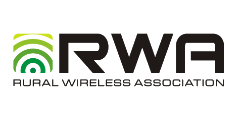NTCA–The Rural Broadband Association and the Rural Wireless Association (RWA) today released at the 2014 Wireless Symposium and WiExpo a study commissioned to explore the use of smaller geographic area licenses in the forward auction of spectrum in the 600 MHz band.
The FCC initially proposed using economic areas as the basis for defining geographic area licenses in the forward auction enabling commercial use of spectrum made available through a preceding reverse auction and reorganization of the broadcast television bands. The FCC has since sought comment on whether it might instead utilize smaller license areas, known as partial economic areas (PEAs), in the forward auction.
The new study, prepared by NERA Economic Consulting and filed today by NTCA and RWA with the FCC, concludes there is a strong case for expanding the number of geographic licensing areas and makes several suggestions for how the Commission could achieve this result while balancing a number of important economic and public policy objectives.
Among the report’s key findings are:
- Through an expansion in the number of licenses based on an appropriately sized PEA structure, the Commission could address concerns about participation of small carriers and the role of the market in determining spectrum allocation.
- The adoption of a sequential forward auction approach with right-sized license areas may also reduce the risk of stranded licenses and address aggregation risks for larger bidders seeking a national footprint.
“NTCA’s members are dedicated to providing competitive modern telecommunications services and ensuring the economic future of their rural communities, and for many that means including wireless services within their portfolio,” said NTCA Chief Executive Officer Shirley Bloomfield. “But despite an increase in interest and available spectrum, just over 60% of NTCA’s members currently offer a wireless service or hold wireless spectrum. The Commission can take a giant step toward promoting greater consumer choice in this market by structuring spectrum auctions and licenses in a manner that does not lead to just big providers winning big blocks and rural communities going unserved after urban buildouts.”
“To ensure coverage to consumers that live in and travel to rural and remote areas, the FCC must correctly size the 600 MHz license areas and allow rural carriers a meaningful opportunity to participate in the forward auction. The two–phase sequential auction proposed by NERA does exactly that most efficiently and effectively, ” said RWA General Counsel Carri Bennet.
The full report is available here.
About NTCA–The Rural Broadband Association is the premier association representing nearly 900 independent, community-based telecommunications companies that are leading innovation in rural and small-town America. NTCA advocates on behalf of its members in the legislative and regulatory arenas, and it provides training and development; publications and industry events; and an array of employee benefit programs. In an era of exploding technology, deregulation and marketplace competition, NTCA’s members are leading the IP evolution for rural consumers, delivering technologies that make rural communities vibrant places in which to live and do business. Because of their efforts, rural America is fertile ground for innovation in economic development and commerce, education, health care, government services, security and smart energy use. Visit us at www.ntca.org.
About RWA – Headquartered in Washington, D.C., RWA – the Rural Wireless Association is a trade association representing rural wireless carriers who each serve fewer than 100,000 subscribers. RWA’s members have joined together to speed delivery of new, efficient and innovative telecommunications technologies to remote and underserved communities. For more information visit www.ruralwireless.org

